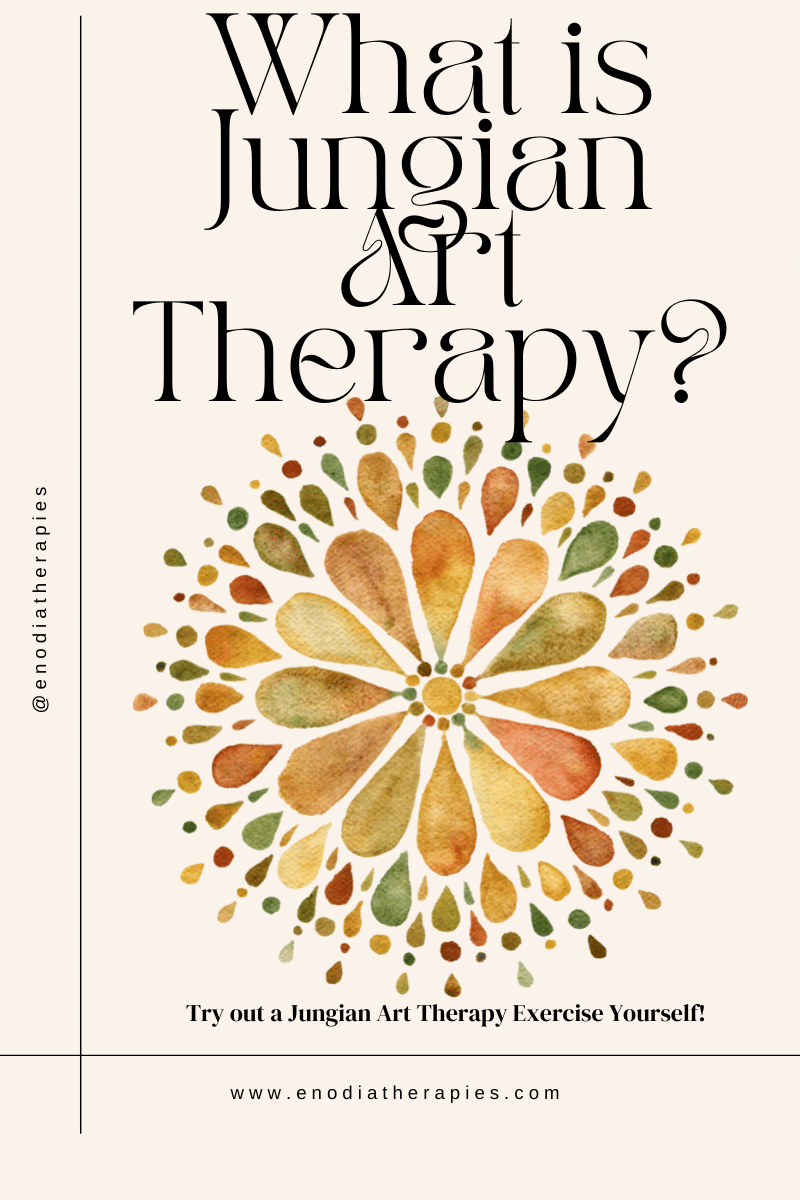What is Jungian Art Therapy?
In this article we will learn about Jungian Art Therapy and discover a Jungian Art Therapy Technique you can do at home!
I am sure we have all heard about Carl Jung, great psychologist and founder of Analytical Psychology. However, did you know that Jung was an Art Therapist in his own right? Jung truly appreciated the imaginative mind, and expression through artwork. He believed in the importance of the arts in art creation, myths, dreams, and active imagination. Jung found through his work that images, metaphors and symbols not only offered healing fror clients, but also himself during difficult times.
Jung believed in the egos (our inner selves!) ability to process unconscious materials, images in art. He believed that symbols that come from our egos provide and assist in the healing process of our own emotional wounds, and self discovery.
What is Jungian Art Therapy?
Jungian Art Therapy is founded in Analytical Psychology. Jung’s theory moved away from Freudian ideas on repression in emotions. Jung considered the unconscious as a powerful tool in understanding the attitude of our egos. While there is conflict that will cause psychological inner tension (fancy words for anxiety, stress, depression) there is an energetic relationship that flows between our conscious and unconscious minds. He called the bridge between the unconscious and the conscious, the transcendent function.
Where does the Art Therapy come in?
In the 1900’s Jung was at the Center of Psychoanalysis Psychiatric Hospital in Switzerland where he worked with people with schizophrenia and dissociation. Her considered his patients words, usually dismissed as nonsensical psychosis rambling, as purposeful and having a unique meaning being communicated.
The experience inspired Jung to explore his own personal experiences of image, symbol, and his unconscious in his famous Red Book. He used art making to explore and balance his inner world with the outer.
Enter Margaret Naumburg, a pioneer for Art Therapy and its development, who underwent Jungian Analyses. She recognized that analytical psychology and art therapy are a natural companion for one another. She encourages clients to create their own interpretations of the symbolic artwork they created. Naumburg focuses highly on the art relationship between the client and their artwork, encouraging dialogue similar to Jung’s active imagination technique. (Don’t worry, thats coming up.) Through Jungian Art Therapy, Naumburg sought out spontaneous healing through creation.
Jung is famous for using Mandalas, a popular Art Therapy tool in many therapists arsenal. The word Mandala means “magic or sacred circle” in Sanskrit. Mandalas are not only meditative and relaxing, but provide a contained ritualistic space for detailed expression and reflection. Jung used the mandala structure to develop a dialogue between his mind and himself, and believed that emotional disorders could be identified within the mandala.
In Art Therapy, the circle of the mandala provides a framework and border for creativity with no discernible beginning or end. It is connected to past, future, and has an inherent archetypal structure. The essence of the mandala taps into a unconscious collective that can point towards inner wholeness, thought and spirituality.
Active Imagination
Jung used a method called active imagination in his artworks. It is a method where you turn inwards in order to have a conversation with inner images and symbols, and interpret them with personal and collective meaning to come to new understandings of yourself.
He used active imagination with art making to explore his unconscious. Art making provides a way for symbols and images to move through the unconscious mind into the consciousness and allows for deeper reflection that can be returned to and examined even further.
With this knowledge, Jung highlighted the creative instinct in Analytical Psychology, including it in the basic instincts of the mind, the others being (hunger, sex, reflection, and action.)
Jungian Art Therapy in Action
Through the use of art materials, art therapists can stitch together a psyche that has been severed from its instincts and connection to the self. Spontaneous painting, or collage will help the process of building inner connections and uncovering what is nonverbal, or hidden within the psyche. Art therapists seek associations and amplification, so that metaphors and symbols become accessible to the self and give the individual more knowledge. In other words, Art Therapy makes visible the transformation within us.
Active Imagination Mandala Exercise
Using any art materials you like, draw a circle and fill it in with how you are feeling using lines, shapes, and colors.
If you are someone who prefers premade shapes, I have some mandala templates you can download here!
Allow yourself freedom to create without judgement.
After you have completed the drawing, examine it for symbols, or shapes that may appear to you. Reflect on these symbols, and see what your immediate association is with it! Ask the symbol what it would like to communicate to you. Write down these reflections and see what comes through! Practicing this often strengthens the skill to dialogue with yourself.
I would love to see your mandalas on instagram with the #enodiamandala
Enjoy this content?
Share it with a friend and follow us on Instagram @enodiatherapies for more like this and to never miss a blog post!




